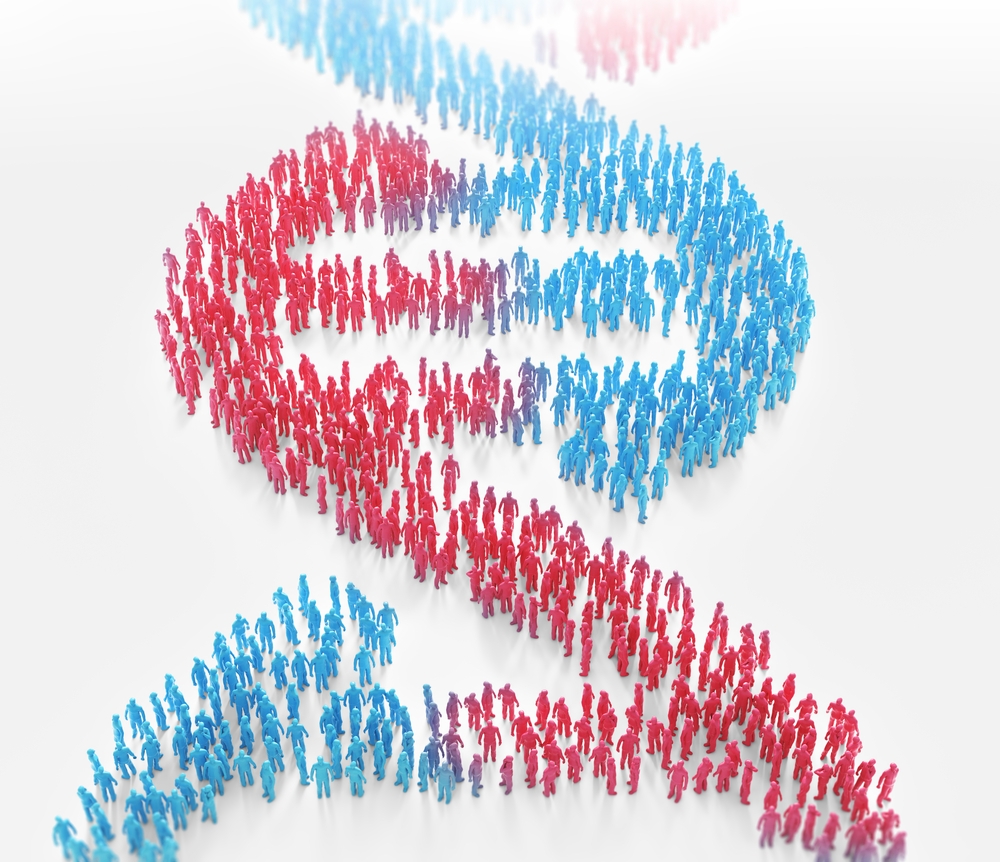APOA2 Gene Mutation Linked to Lower ‘Good’ Cholesterol Levels in Obesity

A variation in the apolipoprotein type 2 (APOA2) gene appears to specifically associate with low levels of high-density lipoprotein (HDL), or ‘good’ cholesterol, and low levels of a key protein, apolipoprotein 1 (APOA1), in overweight or obese people, a study reports.
Knowing what predisposes overweight and obese people to low HDL and APOA1 is important, as these are risk factors for heart disease, stroke, metabolic syndrome, dyslipidemias (abnormal amount of fats in the blood), and multiple cancers.
These findings could help detect people at risk, design screening programs, and provide nutritional advice to prevent low HDL in people with excessive weight, the researchers said.
The study “Association between the APOA2 rs3813627 Single Nucleotide Polymorphism and HDL and APOA1 Levels Through BMI” was published in the journal Biomedicines.
Cholesterol circulates in the blood attached to lipoproteins. Each of these particles contains a combination of proteins, cholesterol, triglycerides (a type of fat), and other molecules.
HDL is commonly called the ‘good’ cholesterol because it removes excess cholesterol from tissues and carries it to the liver to be removed from the body. That is why higher HDL values are better, as they can reduce the risk of cholesterol deposition in the walls of blood vessels (which can make them stiffer and narrower), and lower the risk for heart disease or stroke.
APOA1 and APOA2 are the major structural proteins in HDL, and both play crucial roles in lipid (fat) storage, transport, and metabolism.
According to several studies, blood levels of HDL are strongly determined by genetics. However, scientists only know a small part of the genetic variants, often also called mutations, expected to affect this relationship.
In addition to genetics, obesity is a key factor in altering the levels of lipids in the body, specifically in lowering HDL and increasing LDL, the so-called ‘bad’ cholesterol.
Prior studies identified one small variation at the APOA2 gene, named rs3813627, as a potential susceptibility factor for low HDL levels and coronary heart disease risk. But those studies were done in people with excessive weight and did not account for the influence of obesity.
To address this, researchers looked at the presence of this gene mutation and its relationship with body mass index (BMI, a measure of excess weight) and HDL blood values in 91 overweight and obese individuals, and 62 people of normal weight, serving as controls.
Overweight or obese individuals were defined as those with a BMI equal to or greater than 25 kg/m2, and non-obese were those with a BMI lower than this threshold.
Among overweight people, those carrying the ‘TT’ genetic form at rs3813627 tended to have lower blood levels of HDL and APOA1, as compared to those carrying the ‘GG’ and ‘GT’ variants. (A stands for adenine, T for thymine, G for guanine, and C for cytosine; they’re the four basic blocks of DNA)
Overall, the odds of having low HDL was 3.76 times higher, and that of low APOA1 3.94 times higher, in carriers of the ‘TT’ variant.
These trends were not observed in people with normal weight. None of the variants appeared to have marked effects on HDL in this group.
The link of the ‘TT’ genetic variant in APOA2 with HDL and with APOA1 is at least partially mediated by how high is a person’s BMI. Overall, this is the first evidence that the variant is relevant for overweight and obese people.
“In conclusion, we have shown that the presence of the TT genotype of the APOA2 rs3813627 polymorphism [variant] was associated with an increased risk of low HDL and APOA1 levels in overweight/obese individuals,” the researchers wrote.
“Our data could be helpful for detecting high-risk genotypes [genetic profiles], designing screening programs, and providing dietary suggestions to prevent low HDL in overweight and obese,” the team added.
According to the investigators, more studies are needed to clearly determine if this link is only an association or a true cause-effect relationship (the variant leading to low HDL), and also to take into account other factors that alter HDL – such as diet, physical exercise, or smoking.




